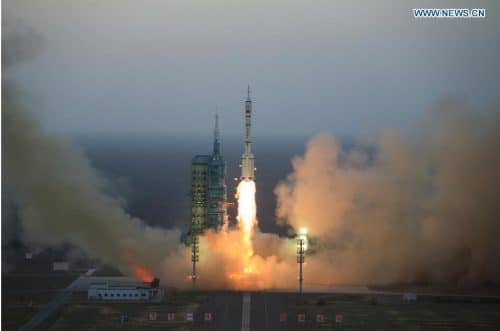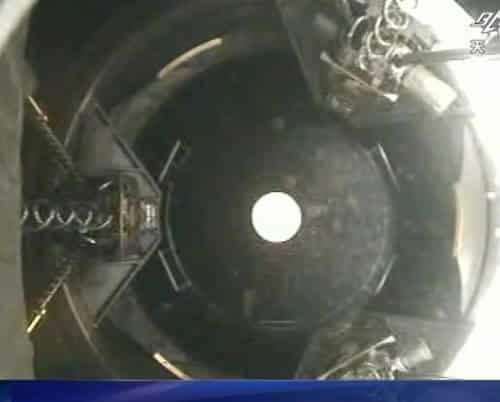Says Tal Inbar, head of the Space Research Center at the Fisher Institute, who has been following the Chinese space program for many years. "The next step will be the construction of a larger space station and transition to a continuous manned presence"

The successful launch of the Shen Zhou 11 spacecraft, which brings two taikonauts to the Chinese space station Tiangong 2, which was launched about a month ago, shows progress in China's ability in space.
As mentioned, the spacecraft was successfully launched last night from the Jiuquan Space Port in the Gobi Desert in China and they are supposed to arrive today at the space station cruising at an altitude of 393 km.
Update, 18/10/16 at 23:00 p.m. Docking was done successfully

Tal Inbar, head of the Space Research Center at the Fisher Institute for Strategic Air and Space Research, which has been following China's space programs for many years, said this evening that the Shenzhou 11 mission marks a transition phase in China's manned space program. "This is the first mission for a long time (a month) and this is a required learning stage on the way to developing a permanent manned Chinese presence in space."
The next step will be in building a larger space station, and transitioning to a continuous manned presence," he added. "China has already begun manufacturing the components for a more sophisticated and larger space station, and has developed a new generation of launchers that will support the next phase of the program"
And what about Chinese private space ventures?
Inbar: "" Buds of commercial space activity can be seen in China, and there are already several companies developing launchers. I met with representatives of one of them two weeks ago at the international space conference held in Mexico. Elon Musk wants to be calm for now... But there is no doubt that China is also interested in entering this field of entrepreneurial activity, including the development of reusable launchers"
Alexander Zheleznyakov, a Russian expert on the history of space flights, said in an interview with the Chinese news agency Xinhua that this is a step that puts China among the leading players in space technology. This step is a continuation of the success of the maiden flight of its new generation launcher - Long March on June 7, and the launch of the world's first quantum satellite "Micius" in August.
"China's achievements so far and future plans in space, especially the lunar exploration program, are well planned and progressing at a steady pace with achievable, impressive and admirable goals," said Zheleznyakov, a member of the Tsilkovsky Cosmonaut Academy in Russia.
According to him, the quality of the Tiangong-2 space laboratory shows that China is progressing according to the plan to build a station similar to the International Space Station by gradually attaching space modules to a basic cell. Zheleznyakov believes that this experimental space laboratory will be used for various approach experiments to the docking bays, during the continuous operation of the life systems, among other things to ensure the safety of the astronauts and the duration of the life of the space station. He expects that China's future space stations will have multiple docking ports compared to the one currently available on Tiangong 2. The Russian expert added that manned space missions can help push the development of other industries, especially high-tech industries, because space projects involve new materials, advanced applications and technical solutions Innovative.
Igor Lisov, a Russian space expert and editor of Cosmonautica magazine, says this shows China's steady progress in its manned space program, so it can test cargo spacecraft docking technology, life support system operation and water recycling to ensure long-term continuous operation of the station with less reliance on Supply from Earth.
Cosmonaut Sergei Zhukov, president of the Moscow Space Club, said that the right choice for China would be to build a space station based on the cylinder structure of the Tiangong-2 space laboratory. He believes that such a space station could become a terminal for maintenance relays and payloads to the moon. He also predicts that Russia is also interested in such a project and it may lead to wider cooperation between the two countries in space.

3 תגובות
The article and especially the foreign Chinese and Russian names make it look, to me, like one of the science fiction stories I used to read in my youth. It's unbelievable how much, really, reality surpasses any imagination.
With less squeamishness than others, they actually progress. with conventional technologies though.